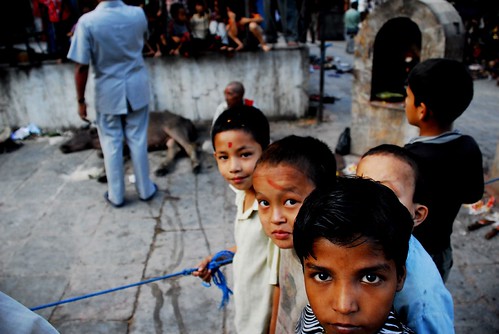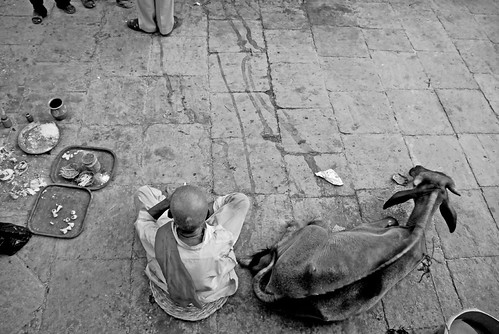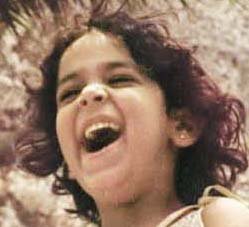Urban Gypsy - Kathmandu
What struck me first was the number of children in the waiting crowd. While I was trying to psyche myself into bravado, they were running around fearlessly. Playing catch and almost tripping over the priest, while I found it hard to look away from the buffalo waiting to be sacrificed. Oblivious to the children’s antics and the flutterings in my stomach, the priest was meticulously laying out the ingredients of a familiar ritual.
There was going to be a full moon in Kathmandu that night…

Heart of the old city
We’d rolled into Kathmandu late the previous evening. Tired, but hungry, we headed out in search of dinner. But walking through the tourist district of Thamel, it felt as though we’d been plunged into some postmodernist dystopia of neon lights, loud music, drug pushers and American convenience stores.
In the brightness of the next morning, Kathmandu seemed friendlier. Ready to make the most of our only day in the Nepali capital, we headed to Durbar Square. The complex comprises the Royal Palace that was the home of the Nepali rulers till recently and about 50 temples. Closed to cars, it’s perfect for a long mid-afternoon stroll, weaving your way among the temples. The lack of traffic means it’s a convenient hangout for local teens and couples, as well, sitting comfortably on the large stone steps. Exploring the temples took us a couple of hours, but the one that really caught my attention was the Kumari Che– the temple to the Living Goddess. The young girl looking down at us from the balcony had been selected as a reincarnation of Goddess Taleju at the age of four. According to tradition, she would stay at the post till she reached adolescence. I wondered what life for her would be like after that.
The only way to know was to speak to a former Kumari. We found out from a priest that a former living goddess, Rashmila Shakya, lived close by and decided to track her down.
But before that, we had another appointment.

As the moon looks on
At one corner of the Durbar Square is a temple of Lord Shiva and Goddess Parvati. We’d been told that every full moon, a goat and buffalo are sacrificed to them and their idols washed in the warm blood. Animal sacrifices in a crowded square in the capital city? This I had to see.
The sacrifice began as the sun started to dip below the horizon. Two men rapidly trussed up the goat and slit its throat before the altar; warning onlookers to step away. A collective gasp went through the crowd as the goat’s life drained out of its body, one plaintive bleat silenced even before it was over. Finally, the severed head was placed before the idols. I willed myself to look, thinking that if I could eat meat, I should be able to watch or be called a hypocrite.
The buffalo was trussed up next; its mouth roped shut, legs tied together. Unlike the goat, which could be lifted to the altar, the buffalo posed a problem for the men. To ensure that the blood reached the idols, its throat was skinned, a vein identified and slit; and a foot planted on buffalo’s stomach to apply pressure and pump the blood out. It was gory, yet not one person, including all the children, looked away. We were all held in place by morbid fascination.

In search of a goddess
Walking through the narrow streets of old Kathmandu, we tried to shake off the impact of what we’d seen and look for the Kumari. Once we found her locality, it was easy to get directions to Rashmila Shakya’s house; goddesses are well-known. And though we turned up unannounced, she agreed to meet us.
One would think that the transition from divinity to mortality would not be an easy one. But Rashmila Shakya seemed to have managed it with relative ease. There was dignity in her shyness, and even her ‘flaws’ had a touch of the divine. She doesn’t speak fluent English because conventional education was thought unnecessary for a goddess. And she has two balding spots on either side of her head, the result of having her hair constantly pulled back in the hairdo of a Kumari.
She was once at the head of processions that thousands participated in; today she is an IT engineer, applying for jobs like any other 24-year-old. Yet, she doesn’t think that her two realities are incompatible. “The way I think of it,” she said, “I’m luckier than other people because I have had a chance to live two different kinds of lives. I miss feeling that importance sometimes, but here I am among my family, and they make me feel an important part of their lives.”
She talked to us about growing up in the Kumari temple, its rituals, about returning home to family life, and being the only Kumari who is a graduate. As we said our goodbyes, I managed to get her to recommend her favourite Nepali dishes.
That knockout Roxy
The first thing we did after leaving her house was to write postcards to our families, “A goddess recommended my dinner menu!” The second thing was to go to a restaurant in Thamel and order those dishes. Kathmandu’s coup de grace in a day of sensory overloads was a mud tumbler full of ‘Roxy’, a local brew that came with the food. She’s a knockout, that one.
The brilliant photos were taken by Akshay, who learnt something about himself that day; that when he's behind the camera, he can take just about everything.

4 comments:
Only to fall sick the next day.
Very interesting... perhaps I should mail this to L.K.Advani and company? Anyway, isn't there more to what the 'goddess' said about her life? I'm mightily curious now.
[akshay]
sssshh.. put a positive spin on it... you took he photos even though you felt that fever coming on..cause work is work is work!!
[rajeev]
There's loads more. Will write another piece about it one of these days.
Was impressed with the photography. turns out you dint do it.
Nice to read, crisp, yet captures all that it can.
Post a Comment